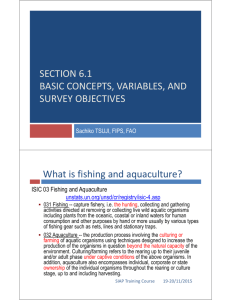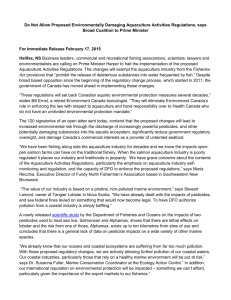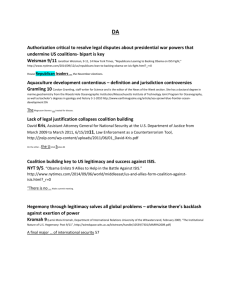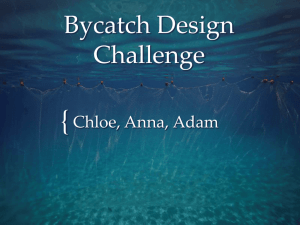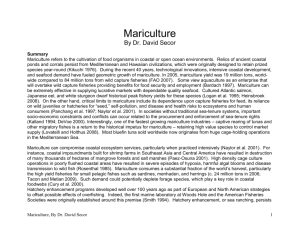Fisheries and Aquaculture Lecture Outline
advertisement
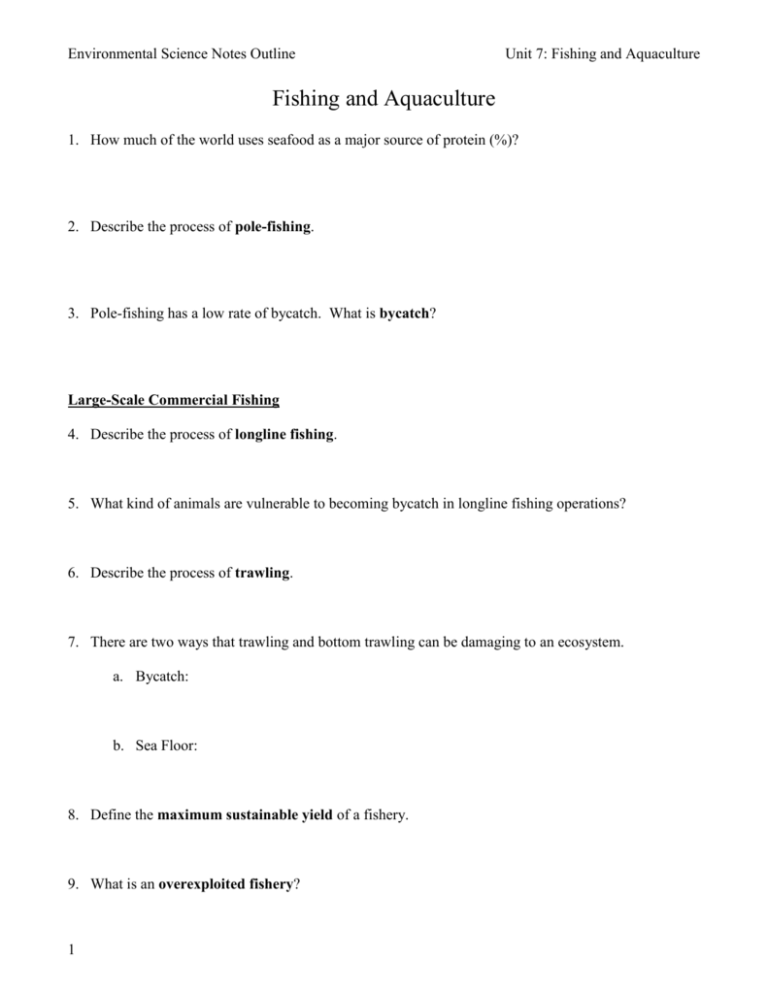
Environmental Science Notes Outline Unit 7: Fishing and Aquaculture Fishing and Aquaculture 1. How much of the world uses seafood as a major source of protein (%)? 2. Describe the process of pole-fishing. 3. Pole-fishing has a low rate of bycatch. What is bycatch? Large-Scale Commercial Fishing 4. Describe the process of longline fishing. 5. What kind of animals are vulnerable to becoming bycatch in longline fishing operations? 6. Describe the process of trawling. 7. There are two ways that trawling and bottom trawling can be damaging to an ecosystem. a. Bycatch: b. Sea Floor: 8. Define the maximum sustainable yield of a fishery. 9. What is an overexploited fishery? 1 Environmental Science Notes Outline Unit 7: Fishing and Aquaculture 10. What is a depleted fishery? 11. Give an example of an organism that could be found at each of these different trophic levels in the ocean. TL1 – TL2 – TL3 – TL4 – TL5 – 12. What does the Marine-Trophic Index measure? Fishing Regulations 13. What are territorial waters? How far do they extend? 14. How far do exclusive economic zones extend? 15. At what level are annual catch limits established at? 16. What are marine reserves? Aquaculture 17. Define aquaculture – 2 Environmental Science Notes Outline Unit 7: Fishing and Aquaculture 18. Define mariculture – 19. What issues are mariculture operations vulnerable to? 20. Define aquaponics – 21. Explain what each of these labels placed on fish at the store mean: Farmed – Wild Caught – MSC Certified – 22. List some advantages of aquaculture: 23. List some disadvantages of aquaculture: 24. List some possible solutions for the following components of fisheries management: a. Fisheries regulation: b. Economic approaches: 3 Environmental Science Notes Outline c. Protect areas: d. Consumer information: e. Bycatch: f. Aquaculture: g. Nonnative invasions: 4 Unit 7: Fishing and Aquaculture



